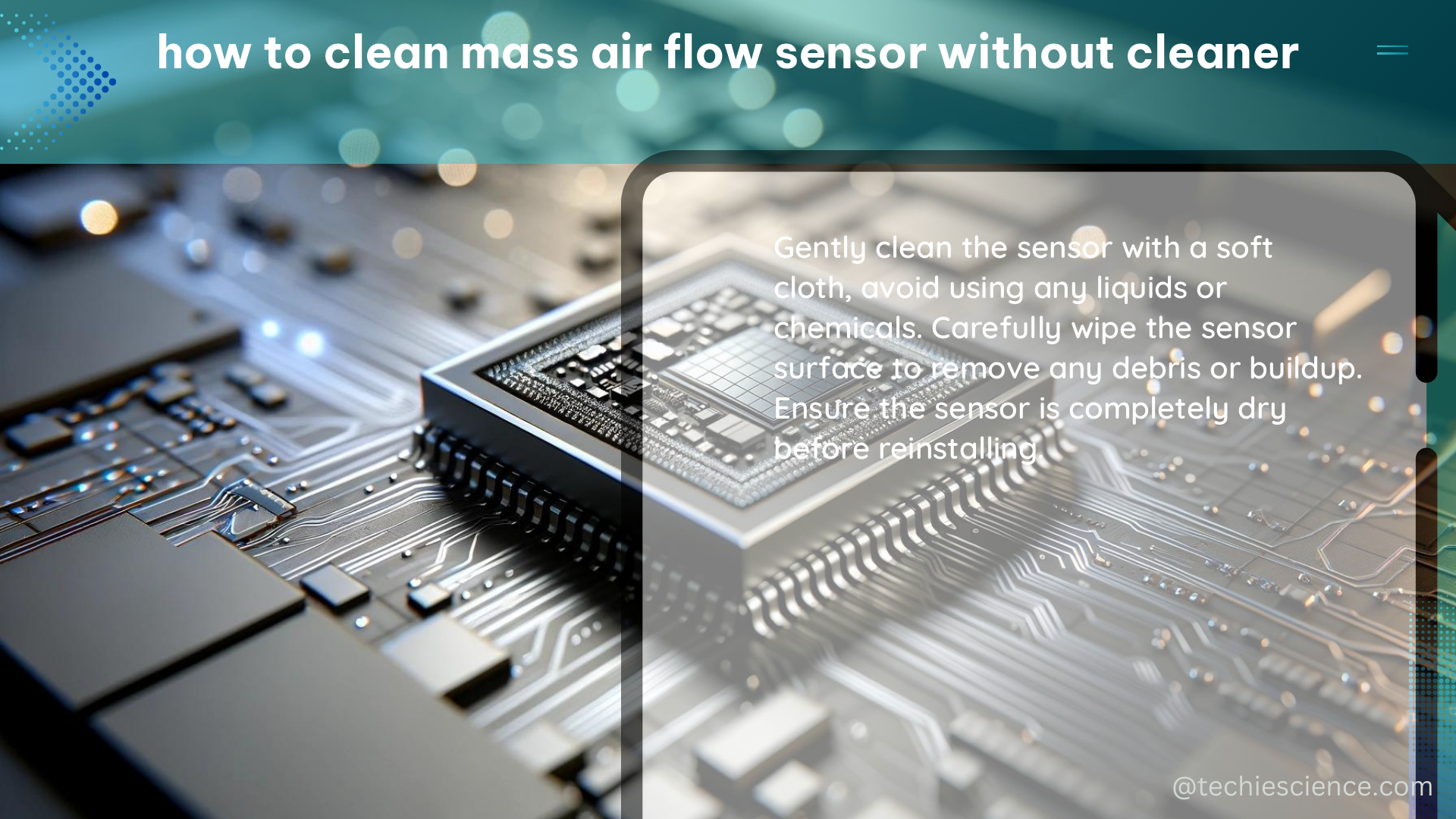The mass air flow (MAF) sensor is a critical component in modern vehicles, responsible for measuring the amount of air entering the engine. When the MAF sensor becomes dirty or contaminated, it can cause various performance issues, such as poor fuel economy, rough idling, and even engine stalling. While specialized MAF sensor cleaners are available, there are alternative methods you can use to clean the sensor without them, provided you take the necessary precautions.
Understanding the MAF Sensor
The MAF sensor is typically located between the air filter and the throttle body, and it uses a hot-wire or hot-film technology to measure the airflow. The sensor’s main component is a thin, fragile wire or film that is heated to a specific temperature. As air passes over the wire or film, the sensor measures the cooling effect, which is then used to calculate the airflow.
Due to the delicate nature of the MAF sensor, it’s essential to handle it with care and use the appropriate cleaning methods to avoid damage. Improper cleaning techniques can lead to sensor failure, which can be costly to repair or replace.
Preparing to Clean the MAF Sensor

Before you begin the cleaning process, it’s crucial to gather the necessary tools and materials. You’ll need the following:
- Isopropyl alcohol (99% or higher)
- Q-tips or a soft, lint-free cloth
- Compressed air (optional)
- Nitrile or latex gloves (to protect your hands)
Additionally, it’s recommended to have the vehicle’s service manual on hand, as it can provide specific instructions on how to safely remove and reinstall the MAF sensor.
Removing the MAF Sensor
The first step in cleaning the MAF sensor is to remove it from the vehicle. This will provide better access and allow you to clean the sensor more thoroughly. Follow these steps:
- Locate the MAF sensor in your vehicle, typically between the air filter and the throttle body.
- Disconnect the electrical connector from the sensor, taking care not to damage the wiring.
- Unscrew or unbolt the sensor from its mounting location, following the instructions in your vehicle’s service manual.
- Carefully remove the sensor, avoiding any sudden movements or impacts that could damage the delicate components.
Cleaning the MAF Sensor
With the sensor removed, you can now proceed with the cleaning process. Follow these steps carefully:
- Prepare the cleaning area by ensuring it is clean and free of any debris or dust.
- Put on your nitrile or latex gloves to protect your hands and the sensor from any skin oils or contaminants.
- Dip a Q-tip or a soft, lint-free cloth in the 99% or higher isopropyl alcohol.
- Gently wipe the metal filament or hot-wire of the MAF sensor, taking care not to apply too much pressure or scrub the surface.
- If there are any stubborn deposits or buildup, you can use a small amount of compressed air to gently blow them away, but be careful not to damage the sensor.
- Avoid wiping the plastic housing or any other non-metal components, as they may be sensitive to the alcohol.
- Allow the sensor to dry completely, which should take approximately 15-30 minutes.
Reinstalling the MAF Sensor
Once the sensor is clean and dry, you can proceed with reinstalling it in your vehicle. Follow these steps:
- Carefully place the MAF sensor back into its mounting location, ensuring it is properly aligned and secured.
- Reconnect the electrical connector, making sure it clicks into place securely.
- Refer to your vehicle’s service manual for any specific torque specifications or installation instructions.
- Start the engine and check for any warning lights or error codes related to the MAF sensor.
Maintaining the MAF Sensor
To keep your MAF sensor in good condition and prevent future issues, it’s essential to maintain it regularly. Here are some tips:
- Avoid using harsh cleaning agents, such as carburetor cleaner or WD-40, as they can leave residues that can damage the sensor.
- If you notice any performance issues or error codes related to the MAF sensor, address them promptly to prevent further damage.
- Consider replacing the MAF sensor if it becomes excessively dirty or damaged, as attempting to clean it may not be effective in the long run.
- Follow the manufacturer’s recommended maintenance schedule for your vehicle, which may include periodic cleaning or replacement of the MAF sensor.
By following these steps and maintaining your MAF sensor properly, you can extend its lifespan and ensure your vehicle’s optimal performance.
References:
- How to Clean Your MAF
- How to Clean MAF Without Having to Buy
- I Don’t Have Access to MAF Cleaner to Clean Mass Air Flow Sensor
- How to Clean a Mass Air Flow (MAF) Sensor
- How to Clean a Mass Air Flow (MAF) Sensor Without Cleaner

The lambdageeks.com Core SME Team is a group of experienced subject matter experts from diverse scientific and technical fields including Physics, Chemistry, Technology,Electronics & Electrical Engineering, Automotive, Mechanical Engineering. Our team collaborates to create high-quality, well-researched articles on a wide range of science and technology topics for the lambdageeks.com website.
All Our Senior SME are having more than 7 Years of experience in the respective fields . They are either Working Industry Professionals or assocaited With different Universities. Refer Our Authors Page to get to know About our Core SMEs.